Black scuba divers document slave shipwrecks forgotten for generations
"It’s important that Black people have a role in telling their own stories.”
This report is part of "Turning Point," a groundbreaking month-long series by ABC News examining the racial reckoning sweeping the United States and exploring whether it can lead to lasting reconciliation.
It was in the middle of December 1827 when the Guerrero, a ship crewed by Cuban pirates, sped through the waters south of Florida to Havana, where they aimed to trade their precious cargo: 561 people who had been kidnapped from their homes in West Africa.
As a bad storm approached, the Cuban brig and its crew were trying to avoid British ships that were enforcing a ban on the slave trade, which had been implemented 20 years prior by Great Britain.
Near Orange Cay in the Bahamas, a British warship called the HMS Nimble spotted the Guerrero sitting suspiciously low in the water with the weight of the captives on board. The Nimble's crew fired two warning shots at the Guerrero and the chase was on. After five hours, the Nimble had gotten close enough to engage the Guerrero, and the two ships battled with cannon and musket fire.
The hundreds of people held captive, crammed into the Cuban boat no more than 120 feet long, could not have known what was happening above.
As the sun set, the storm descended. The Guerrero tried to take off again but crashed into the Florida reef, ripping open its hull. Its masts fell. Those on the British ship 2 miles behind could hear the screams of the hundreds aboard.
Forty-one African souls died there in bondage. Nearly 200 years later, the brig still hasn't been found.
This story may have been forgotten if not for Gail Swanson, a Florida Keys historian who first uncovered a log from the Nimble in 1992, which described these events. Later, divers Ken Stewart and the late Brenda Lanzendorf took on the search for the ship.
The two founded Diving with a Purpose (DWP) together in 2004 with the intention of finding and documenting what is left of the Guerrero. Today, divers of all ages take part in the program, learning to identify and map shipwrecks in the Florida Keys and beyond, as far away as South Africa. Most of its members are Black.
Rachel Stewart started scuba diving with her late father while on a trip when she was only 13 years old. Now 24, she says, "diving is something I love doing to remember him."
Before she joined DWP, Stewart said she didn't know much about maritime archeology. But then she learned about the Guerrero.
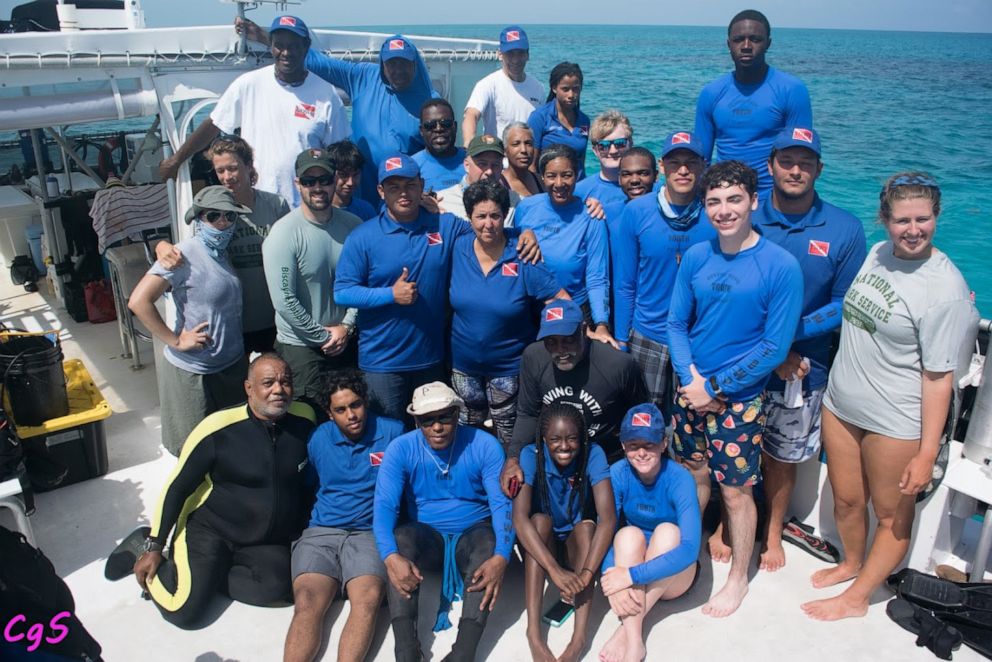
"I started to think about how underwater archeology can show me more about my history and where I come from," she told ABC News.
As she works on a Ph.D. at the University of Wisconsin, Stewart is one of a group of divers who keeps returning to DWP to carry out its missions -- she joins DWP as an instructor when she can.
"It's uncovering a bit of people's pain. It's important to know and tell these peoples' stories," Stewart said. "It's important that Black people have a role in telling their own stories."
"So much that has been told in history is from someone else's perspective," Melody Garrett, lead instructor at DWP, told ABC News. "We have to tell our side -- our truth -- about these people [and] what has happened to them. It's the ugly part of history and people don't like to talk about that, but it happened and it's true."
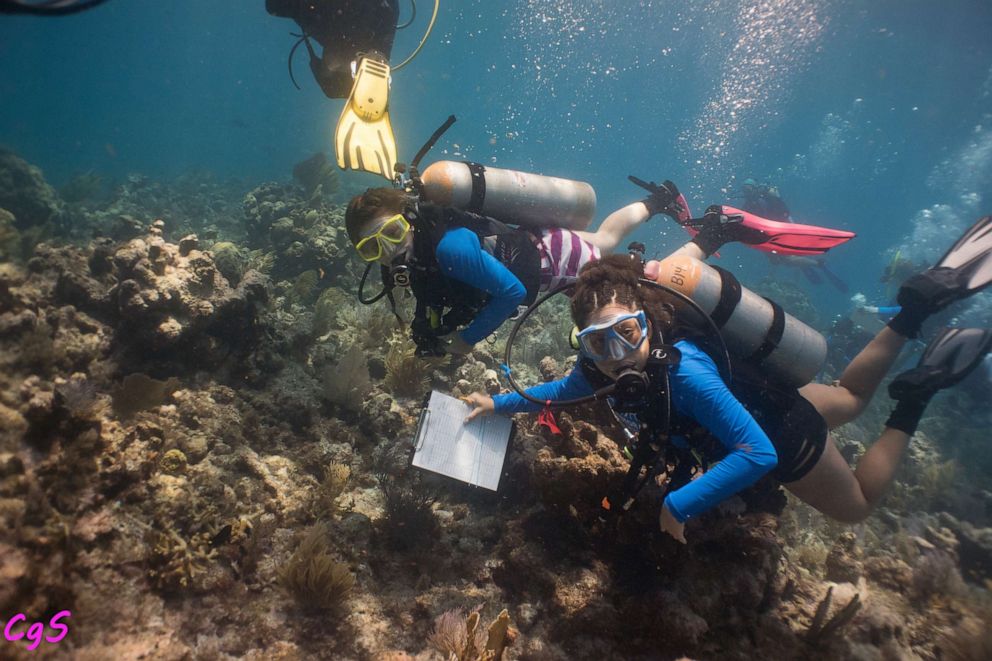
Garrett, an anaesthesiology physician by trade, says we're only "just beginning" to dig into this history.
"Until you're actually doing it, [the history] is just something you hear about, but when you start to find things … it really starts to sink in," she said of DWP's work. "The more you do and the more you learn, the more you feel it; you understand the need for it and the purpose."
Lost roots and the anonymization of slavery
Slavery in the Americas, defined by the European trade of captive Africans, predates Christopher Columbus and spans 400 years to the U.S. Civil War, according to Christopher Brown, a Columbia University history professor who teaches and conducts research on the slave trade. In that time, an estimated 12 million Africans were taken from their homes. Around 10 million arrived in the Americas.
The idea of "Blackness" is born out of slavery. The people stolen from their homes had cultures of "extraordinary variety and diversity," Brown said. Enslaved peoples had dozens of languages and a plethora of different styles of religious and spiritual beliefs.
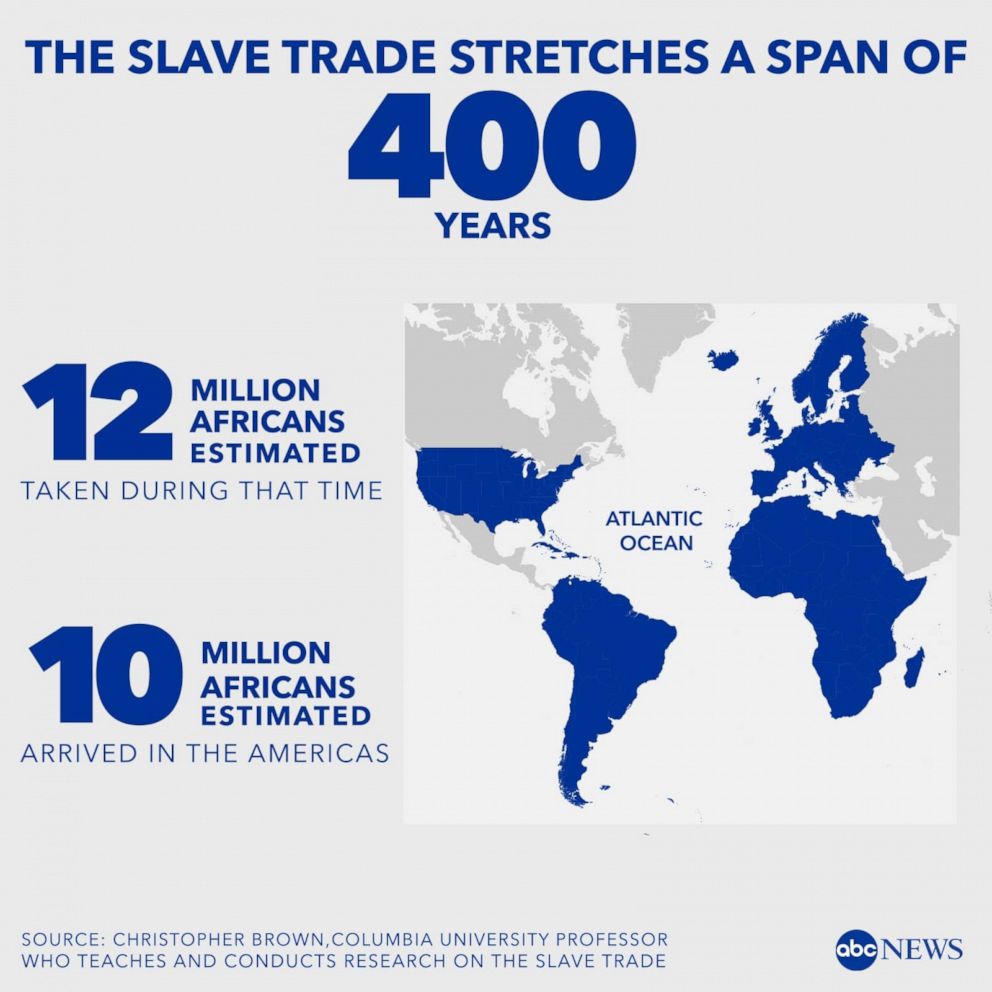
It'd be as if 500 years ago, all the indigenous peoples between Boston, Massachusetts, and Rio de Janeiro in Brazil were taken elsewhere and forced to adopt a uniform identity, Brown said.
"What [would] all those people have in common? Not a lot. They don't know each other… In some cases they're not even aware of each other … but [they] reside in the same hemisphere. Something similar [is] at work on the West African side, from Senegal to Angola."
Over generations, they formed a new, singular "Black" community.
Today, the descendants of enslaved people experience not only the remnants of slavery in racism and discrimination, but also a disconnect from their African heritage and ancestry. It leaves so many Black Americans yearning for a connection to understand and pinpoint their roots in Africa.
"To know exactly where you come from is very difficult," Stewart, DWP's co-founder, told ABC News. "It's not often to be on the site where your ancestors lay."
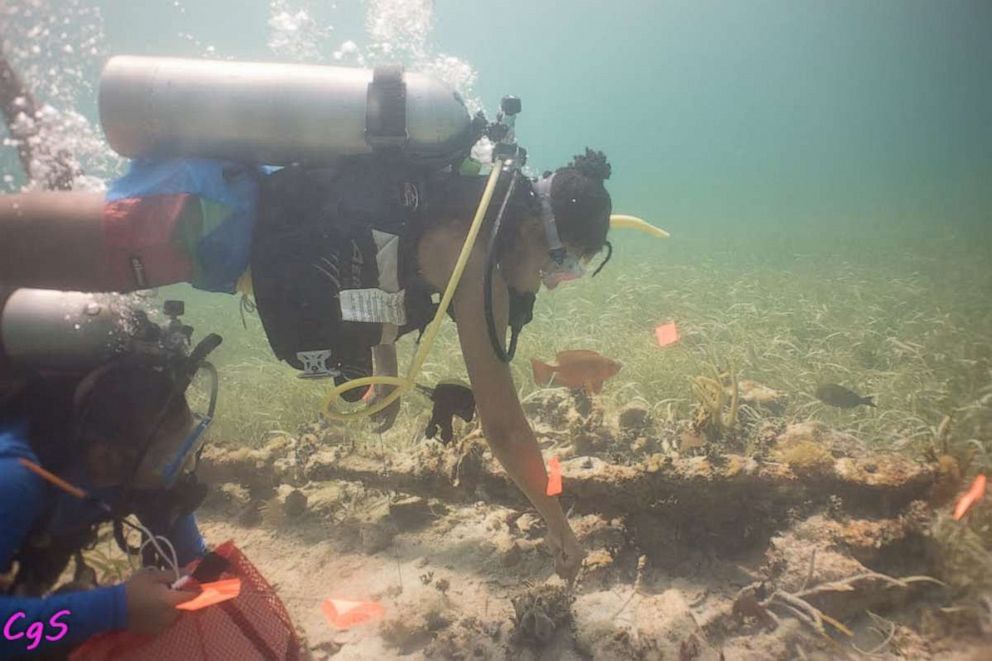
Stewart said he used to take people who couldn't dive to the wreck site of the Henrietta Marie, one of the first slave shipwrecks found in the 1970s.
"A lot of people go out there just for the spiritual aspect of it. Even knowing the Henrietta Marie didn't have any Africans onboard when it went down," he said. "It's a spiritual aspect of the journey that your ancestors may have taken."
Brown, a professor who's taught about the slave trade for over a decade, had his own experience with this when he arrived in Ghana during his first visit to Africa.
"I went to this conference… I found myself doing this ridiculous thing of being at the airport, in a crowd, looking at people's faces and saying, 'I wonder if I'm related to that person'… in a way that kind of flew in the face of the academic mindset," he said.
"The desire to connect to something that is lost is so powerful that even when you think you have dealt with it on an intellectual level … I found all of that fell away when I was actually there," he said.
An expedition into history and heritage
Dives start the night before even getting in the water -- at least that's when it starts for Erik Denson, a 28-year diving pro who works by day as a NASA electrical chief engineer at the Kennedy Space Center in Florida.
The night before a mission, Denson prepares and tests his fins, mask, snorkel, regulator and his own tanks equipped with Nitrox, a gas that provides a higher concentration of oxygen so that divers can stay underwater for longer and prevent more severe symptoms of decompression sickness.
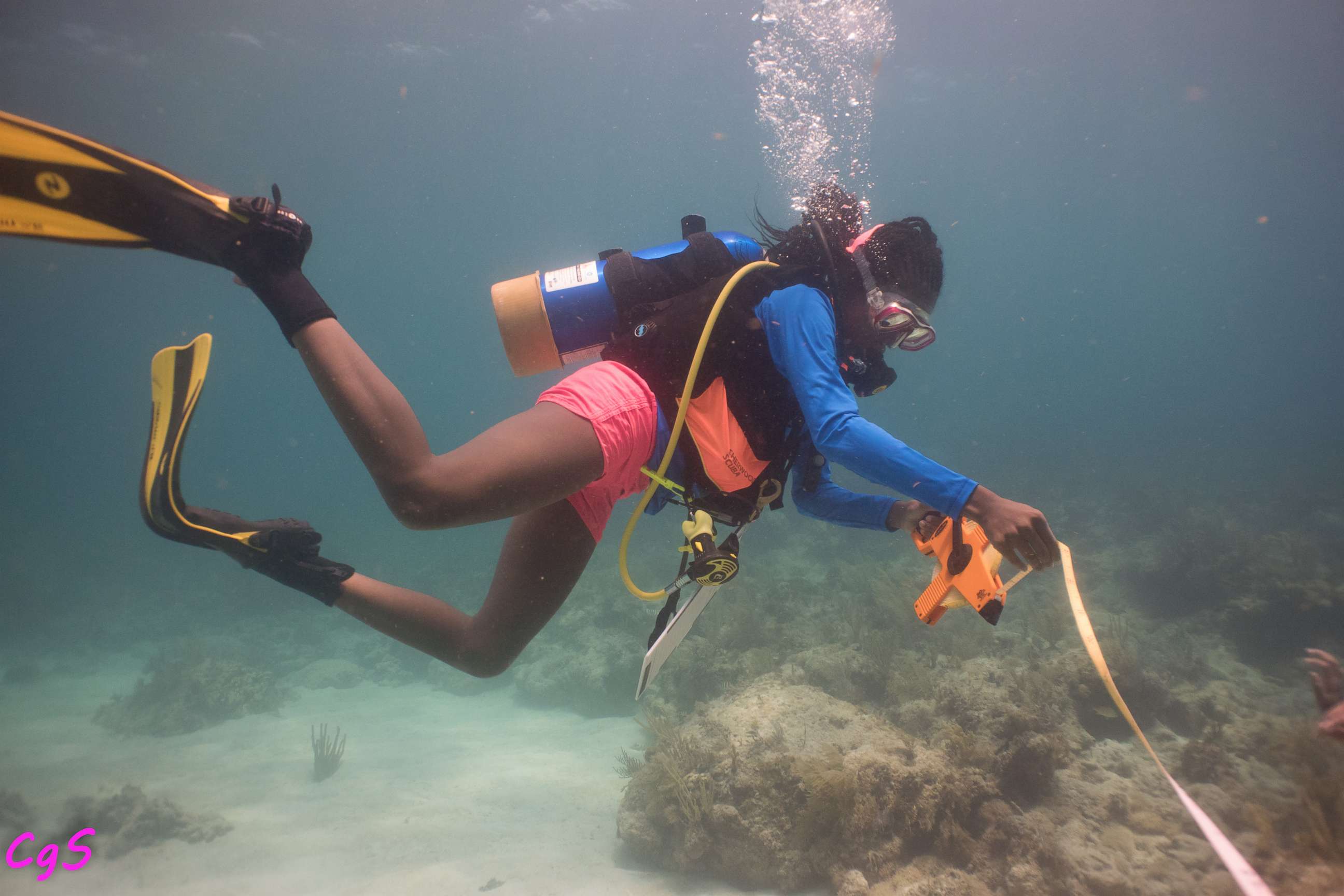
Rachel Stewart remembers when an instructor in the Youth DWP program would wake up the young divers early in the morning and gather them for yoga so that they could stretch before a day of diving. The program emphasizes planning and assignments for each diver. For safety reasons, scuba is never done alone, so each member is paired with a buddy.
The divers carry two tanks, with each one allowing for about an hour of underwater time, depending on how heavily the diver breathes and how deep the water is.
Long before the dive happens, archaeologists must first tow a magnetometer back and forth in the water, systematically searching for any metallic anomalies along the seafloor. Dave Conlin, chief of the National Park Service's Submerged Resources Center, calls it "mowing the lawn."
Divers are needed to investigate whether the anomalies detected by the equipment are refuse, like lobster traps and old televisions -- or valuable artifacts.
Divers first create one or more baselines -- basically stretching a tape measure from one point to another underwater -- and then place pin flags by any areas of interest, like a possible artifact, which can be hard to discern after so much time deteriorating underwater. Divers match each point to the baseline and then draw everything with dimensions.
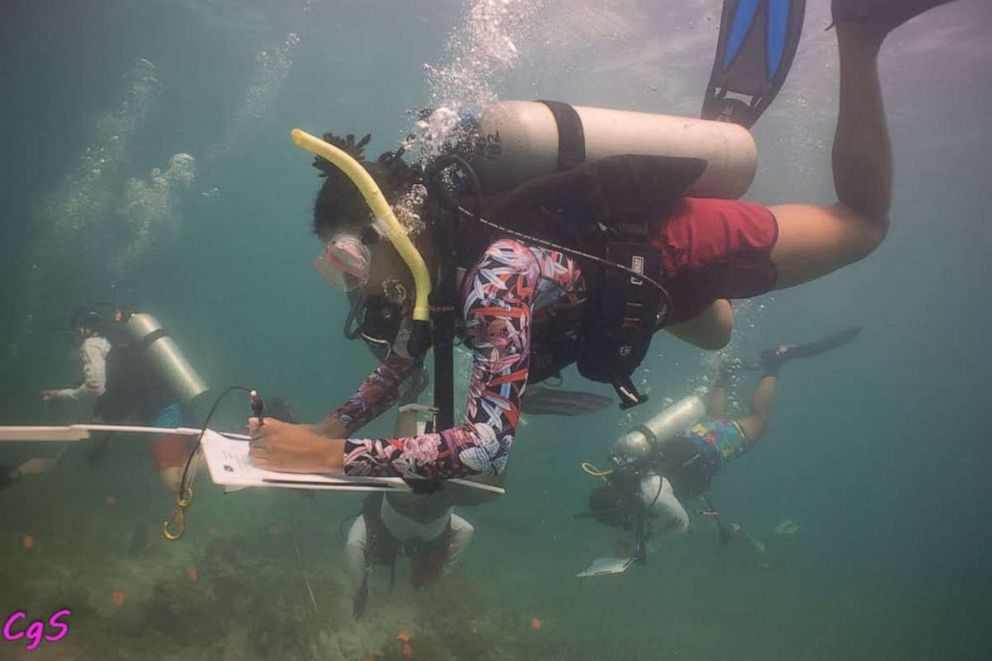
It's tedious but the work suits Stewart, who's getting her PhD in environmental engineering. In fact, many of the DWP divers come from engineering backgrounds, including Denson.
Dr. Anthony Ford, an emergency physician by trade, is the president of the National Association of Black Scuba Divers (NABS), an organization which many DWPers are also members.
"It started with people who looked alike, who bonded, who didn't want to feel like a unicorn on a boat," Ford told ABC News. "Typically, you're the only person of color on the boat... it started with the intent of not being alone, not being the only one."
It's something that certainly helped Denson feel more comfortable, he said. He now leads the Orlando, Florida, chapter of NABS.
"There's a feeling of belonging… to travel [with] people who are like you -- who look like you," he said.
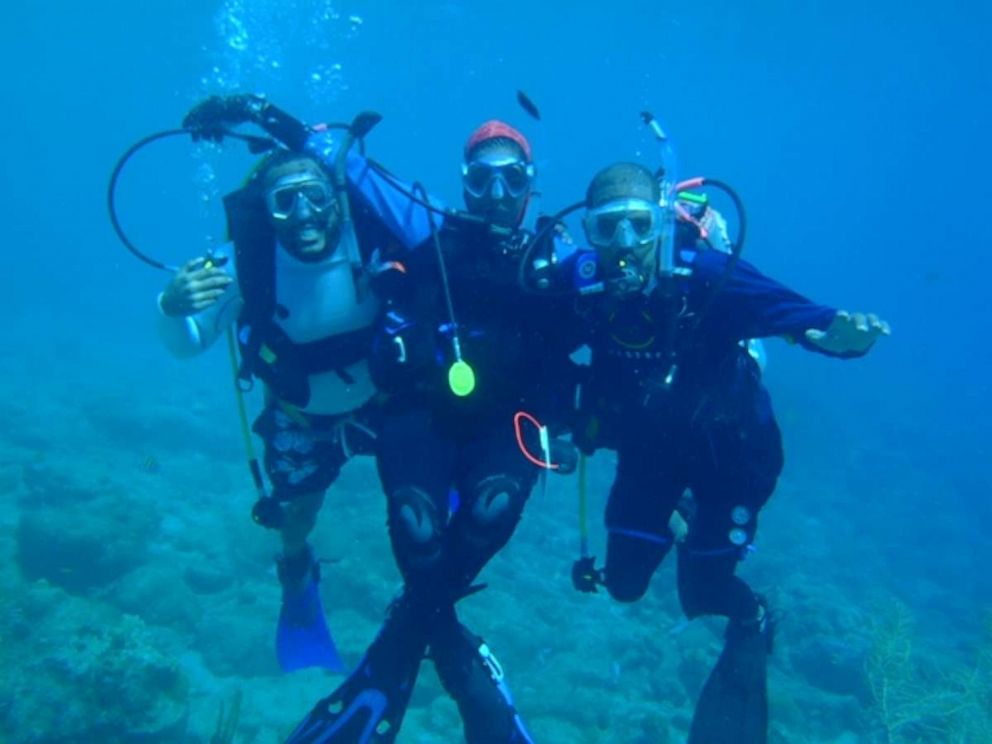
American history, unexamined and untold
Between 1501 and 1875, there were at least 30,447 slave voyages that aimed to disembark in mainland North America, the Caribbean, Spanish Americas or Brazil. Of those, 575 ended in shipwreck, according to the Trans-Atlantic Slave Trade Database.
Brown says the number of slave shipwrecks that researchers have been able to confirm are the absolute minimum, and that the true number of shipwrecked slave ships are likely much higher.
"I'm surprised there weren't more of them," Brown told ABC News. "There's information that might be out there that they don't have, and they have partial information on many voyages… [These numbers] capture what they know to have been wrecked but it's probably a minimum."
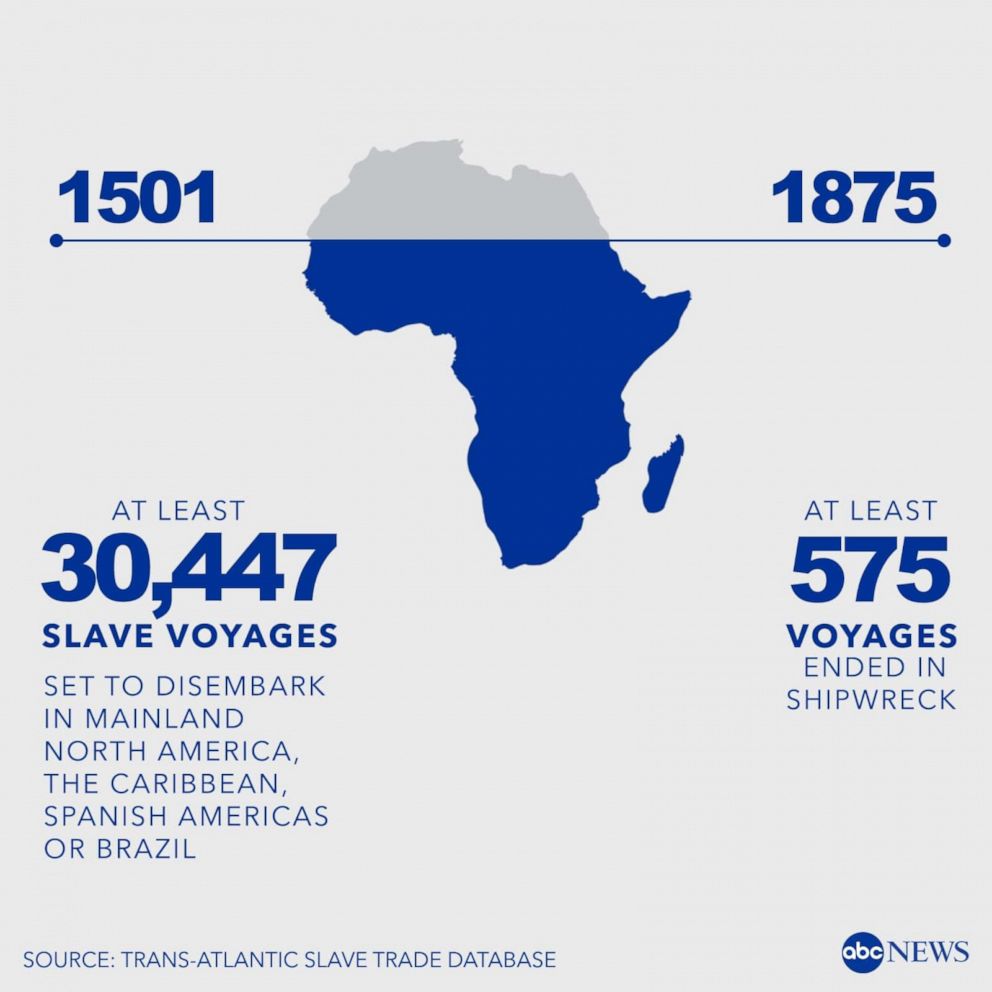
Despite the hundreds of slave ships that likely litter the shores of the U.S., only a handful have been found. Even fewer have been excavated and conserved.
In the Florida Keys, there is a "trifecta" of natural phenomena that creates an environment ripe for shipwrecks, said Corey Malcom, lead archeologist at the Mel Fisher Maritime Museum in Key West, Florida. They include Florida's reefs, the threat of hurricanes in the Gulf of Mexico and the powerful Gulf Stream, a current that Europeans utilized to help propel their ships home across the Atlantic.
"These giant wooden boats [are] packed with hundreds of people out in the middle of the Atlantic Ocean," Brown said. "A lot of things could go wrong, not least [of which was] the weather."
Then, a part of the challenge of finding and uncovering a wrecked boat's history is the "sheer number" of wrecks, according to Matthew Lawrence, an archeologist at the National Oceanic and Atmospheric Administration Florida Keys National Marine Sanctuary. Documenting them is an expensive and labor intensive process, he said.
Both the marine sanctuary and its neighbor, Biscayne National Park, rely heavily on the work of trained diving volunteers like those from DWP to explore these lost sites.
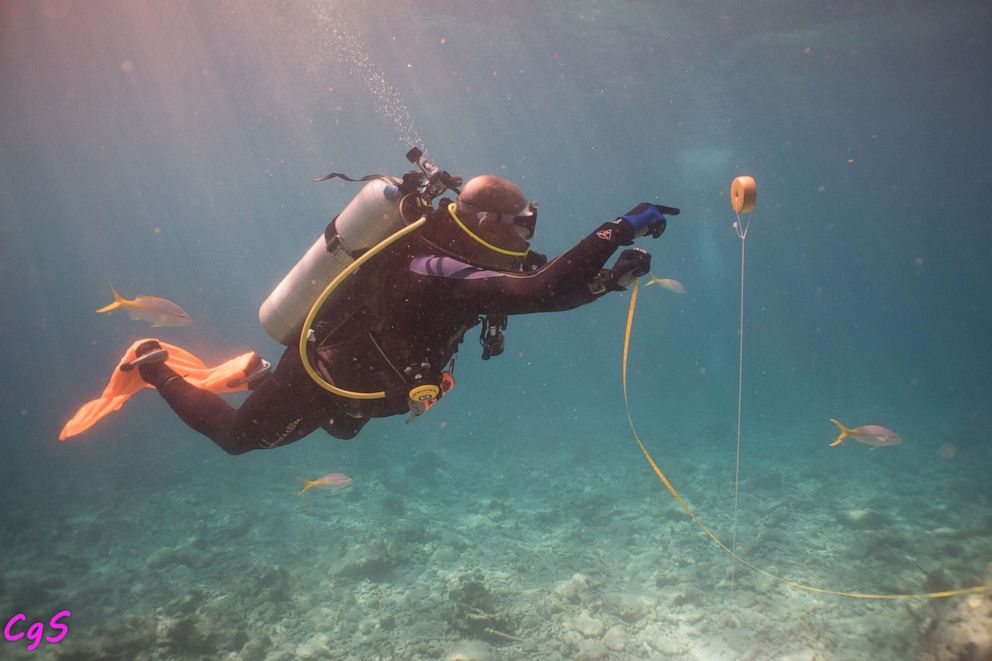
In the National Parks Service, Conlin leads a team of only nine archeologists who are responsible for 5 million acres of submerged land, he told ABC News.
"We need the support," he said. "The second reason [is] national parks are fundamentally for American people and we welcome and try to create opportunities for Americans to be involved in ... their history."
"It's a part of history that needs to be told. It's not taught in schools," Stewart said. "Slavery is not something people want to be invested in. A lot of people would rather forget about it… We're seeing the ramifications of it now."
The search continues
Diving in these spaces can be emotionally heavy.
"You feel like their spirit is there. You're trying to capture more about their experience, what they experienced at the time of their demise," Garrett said. "Picking up something from their spirit helps to kind of bring closure -- to tell their story."
Swanson, the historian who stumbled upon the HMS Nimble's log, has been on a similar mission for 28 years now, piecing together the stories of the people who were on the Guerrero. Her research has taken her to Louisiana, South Carolina, Connecticut and across the Atlantic Ocean to London.
Of those who survived the Guerrero wreck, 398 were ultimately sold into slavery in Cuba. In 1830, nearly three years after the wreck, 92 survivors arrived in Liberia as free men. Swanson tracked their journeys over the years, from who they married to their occupations and the children they had, in her book "Slave Ship Guerrero."
Today, DWP is unearthing Black history from other eras, too.
The organization has gone to the Great Lakes, where they documented a 1944 plane belonging to one of the Tuskegee Airmen, a group of primarily African American military pilots and airmen who fought in World War II. DWP also runs a program cultivating coral in floating PVC pipes and then replanting them on Florida's reefs. Most of all, DWPers value investment in their Black youth.
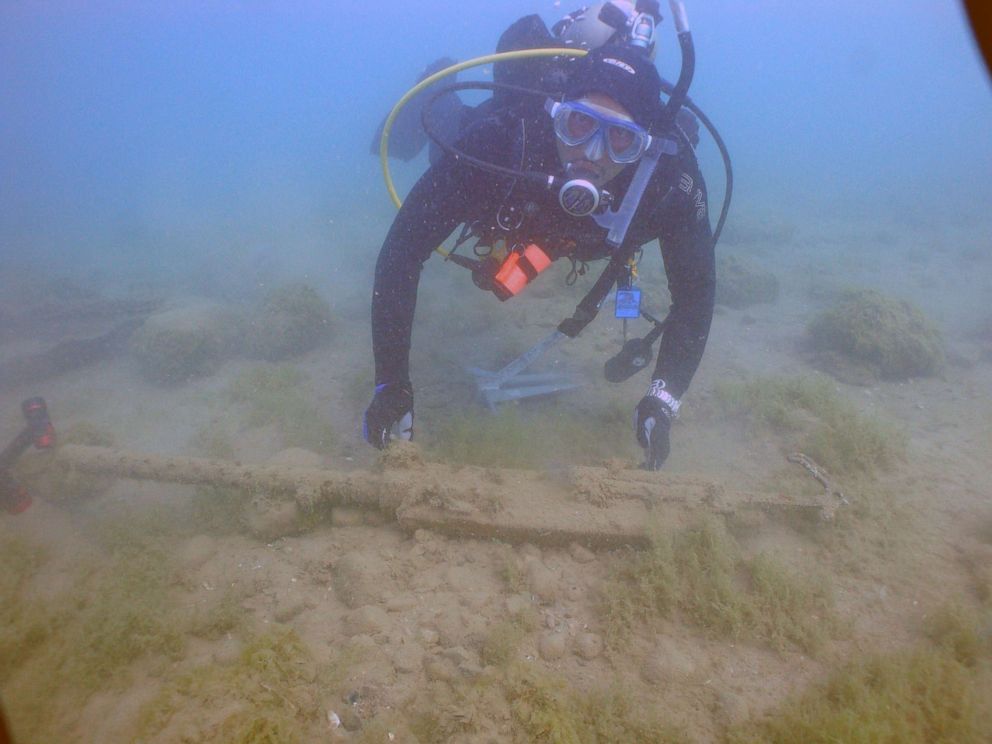
"It's great exposure… They probably would have thought they couldn't do it or didn't think about it," Denson said. "How many kids are exposed to underwater archeology? It opens them to other careers."
It starts by just letting them know diving is a possibility.
"I would've never believed Black people scuba dived until I saw it, let alone teaching others to dive or teaching others to be scuba instructors," Ford said. "Like me, if people are exposed to it, they may be interested [to learn] this exists and you can be a part of it."
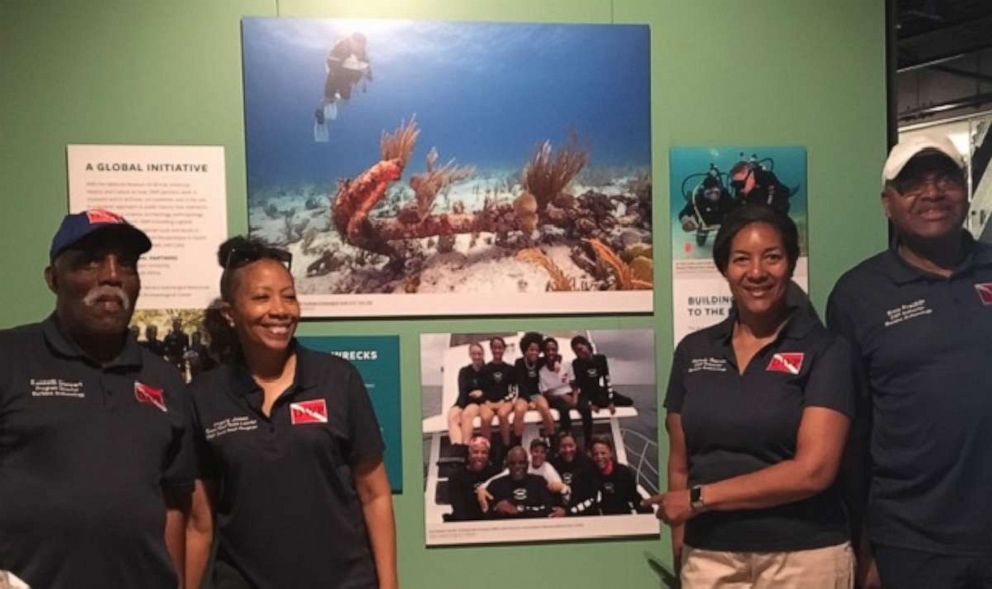
It's a passion those at DWP hope to foster and pass on to a new generation.
"You feel like Superman; you can just glide and fly," Garrett said. "It's just so open, it goes on forever. The only thing you hear is your own breath."
"I feel like I'm in another world. I forget about my cares and concerns on land," Denson said of diving. "It's so beautiful, so serene. You can look at God's beauty."


